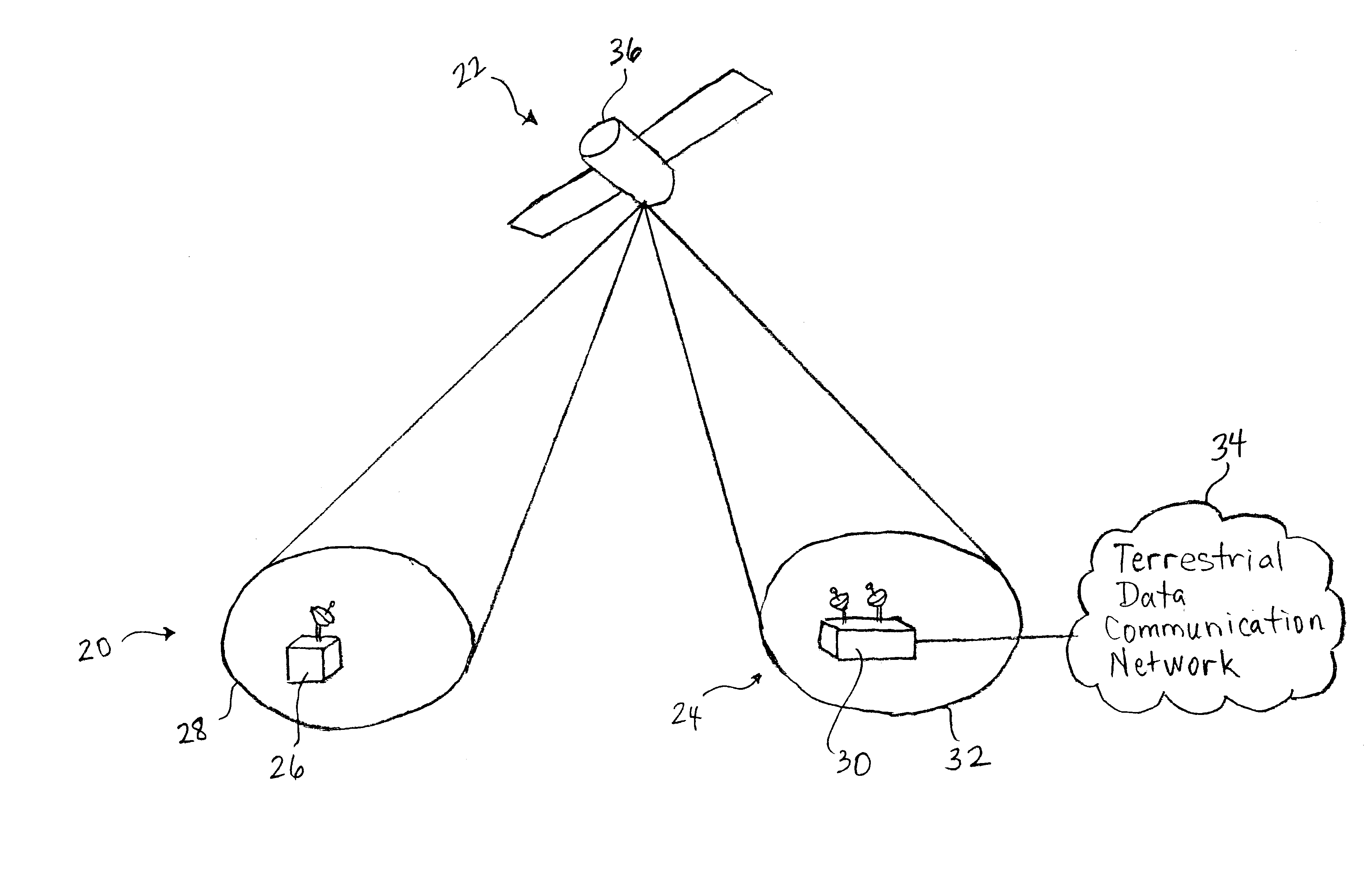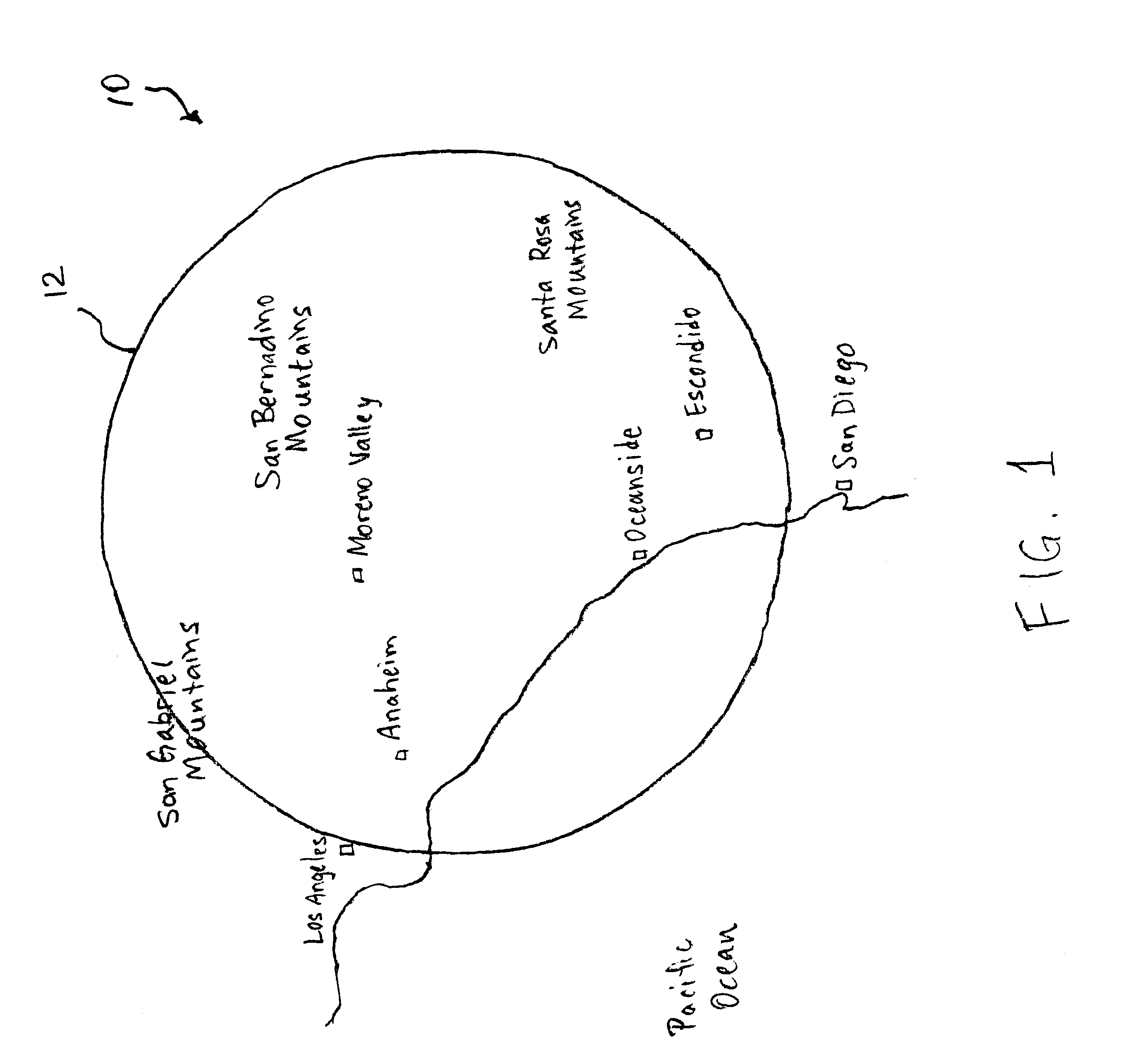Scalable satellite data communication system that provides incremental global broadband service using earth-fixed cells
a satellite data communication and global broadband technology, applied in the field of data communication, can solve the problems of increasing the service coverage, affecting the service life of the satellite, and consuming the processing capacity of the terminal and the satellite, so as to increase the service coverage, and increase the rate
- Summary
- Abstract
- Description
- Claims
- Application Information
AI Technical Summary
Benefits of technology
Problems solved by technology
Method used
Image
Examples
Embodiment Construction
A satellite data communication system of the present invention may be viewed as having three principal physical segments: a user terminal segment, a space segment, and gateway segment. The user terminal and gateway segments are located in Earth-fixed cells defined on the Earth's surface. Satellites in the space segment facilitate communication of data between user terminals and their associated gateway terminals in the user terminal and gateway segments. Prior to discussing further details of these segments and the operation of a satellite data communication system constructed according to the present invention, a brief description of partitioning processes suitable for use in defining Earth-fixed cells is warranted.
Partitioning of the Earth's surface into Earth-fixed cells may be complete or incomplete. Complete partitioning means that the entire Earth's surface has been partitioned into cells. Incomplete partitioning results when Earth-fixed cells are defined for only a fraction o...
PUM
 Login to View More
Login to View More Abstract
Description
Claims
Application Information
 Login to View More
Login to View More - R&D
- Intellectual Property
- Life Sciences
- Materials
- Tech Scout
- Unparalleled Data Quality
- Higher Quality Content
- 60% Fewer Hallucinations
Browse by: Latest US Patents, China's latest patents, Technical Efficacy Thesaurus, Application Domain, Technology Topic, Popular Technical Reports.
© 2025 PatSnap. All rights reserved.Legal|Privacy policy|Modern Slavery Act Transparency Statement|Sitemap|About US| Contact US: help@patsnap.com



